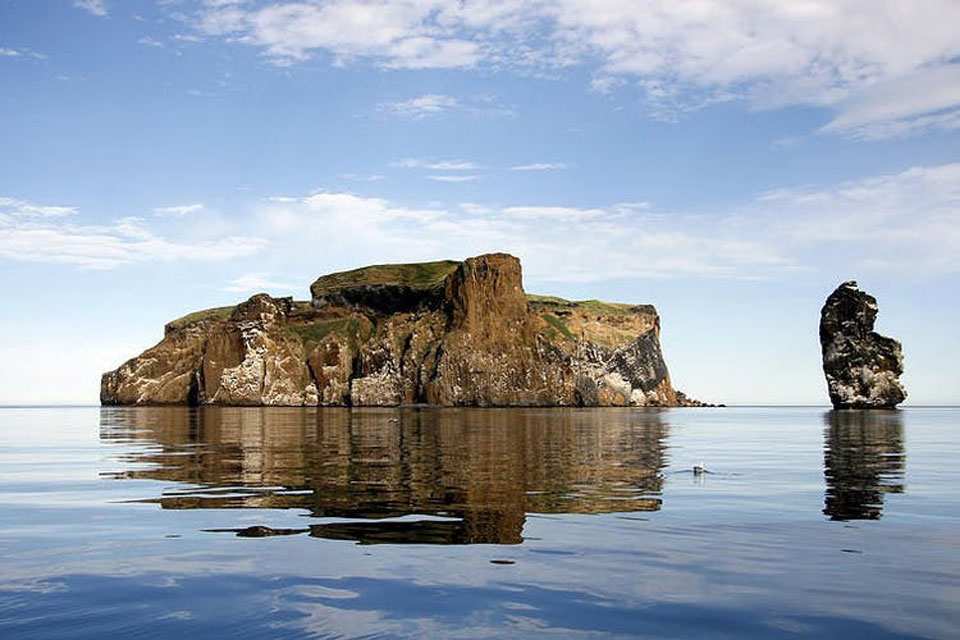Grettir’s Saga is perhaps one of the lesser known. Nevertheless, the story of this bellicose adventurer is great fun to read aloud to children at Halloween. Not least, because Grettir was renowed as “better able than any other to deal with spectres and goblins” such as Glam.
The story about Grettir Ásmundarson was written down quite late, around 1400. Nevertheless it is considered to be one of the more prominent Sagas of Icelanders (Íslendingasögur), which tells stories of events that supposedly took place in Viking Age Iceland.
The saga tells the story of how Grettir’s viking great-grandfather Onundur Tree-Foot took part in the great Battle a Hafrsfjord c. 870-900, where king Harold Finehair subdued a number of Norwegian Sea-Kings and proclaimed himself the first king of Norway. After the battle, Onundur escaped to Iceland where he settled and begat a family. One of his descendants was Grettir, who became known as a fearful warrior. The saga tells the story about how Grettir survived for many years despite his status as an outlaw until he met the spectre or “draugr” of Glam, who cursed him thoroughly. As a result, Grettir lost his luck, became afraid of the dark, and was doomed to twenty years of misery, loneliness and an early death at the Island of Drangey.
As a counterweight, the saga also tells the story of the life of his half-brother, Thorstein Dromund, who ends up in a monastic cell in Rome. Scholars believe the saga recounts the different ethos among the old and the knew Icelanders – the Heathens as opposed to the Christians.
Draugr

The word “draugr” is said to derive from Indo-european *draugaz, phantom, from *drewg, deceive. They are undead creatures, who live in their graves. Their home is the burial mound where they sit up (as opposed to be laid down). As opposed to ghosts, they are animated corpses who inhabit lives of extraordinary character.They possess superhuman strength and can increase their size. However, they cannot suppress the foul stench of decay, which they ooze onto the unfortunate humans, they encounter. Nor can they change their swollen, death-blue or corpse-pale appearance. Their main weapon is their size, with which they crush their victims; or they devour them by drinking their blood. One of their pastimes were to roam in the countryside devastating cattle, horses or sheep by riding them to death by exhaustion. As witches and wizards, they are able to shape-shift. Draugrs are difficult to get rid of. You have to cut off the head, burn the body, and dump the ashes in the sea.
The “draugr” are always evil creatures driven by jealousy and greed. One of the best-known draugr is Glámr, who is defeated by the Grettir. After Glámr died on Christmas Eve, “people became aware that Glámr was not resting in peace. He wrought such havoc that some people fainted at the sight of him, while others went out of their minds”. After a battle, Grettir eventually got Glámr on his back. Just before Grettir killed him, Glámr succeded in cursing Grettir because “Glámr was endowed with more evil force than most other ghosts”; and thus he was able to speak and leave Grettir with his curse after his death, we are told.
The saga of Grettir is recommended to anyone, who is looking for a well-spun tale of heroes, monsters, death, decay – and afterlife.
SOURCE:
The Saga is available in a number of translations. The one recommended here is the translation from 1919 by George Aislie Hight.
The saga of Grettir the Strong; a story of the eleventh century.
Translated from the Icelandic by George Ainslie Hight
London, Dent ltd. 1913
READ THE SAGA:
The full text – Grettir’s Saga – is available at the The Icelandic Saga database
